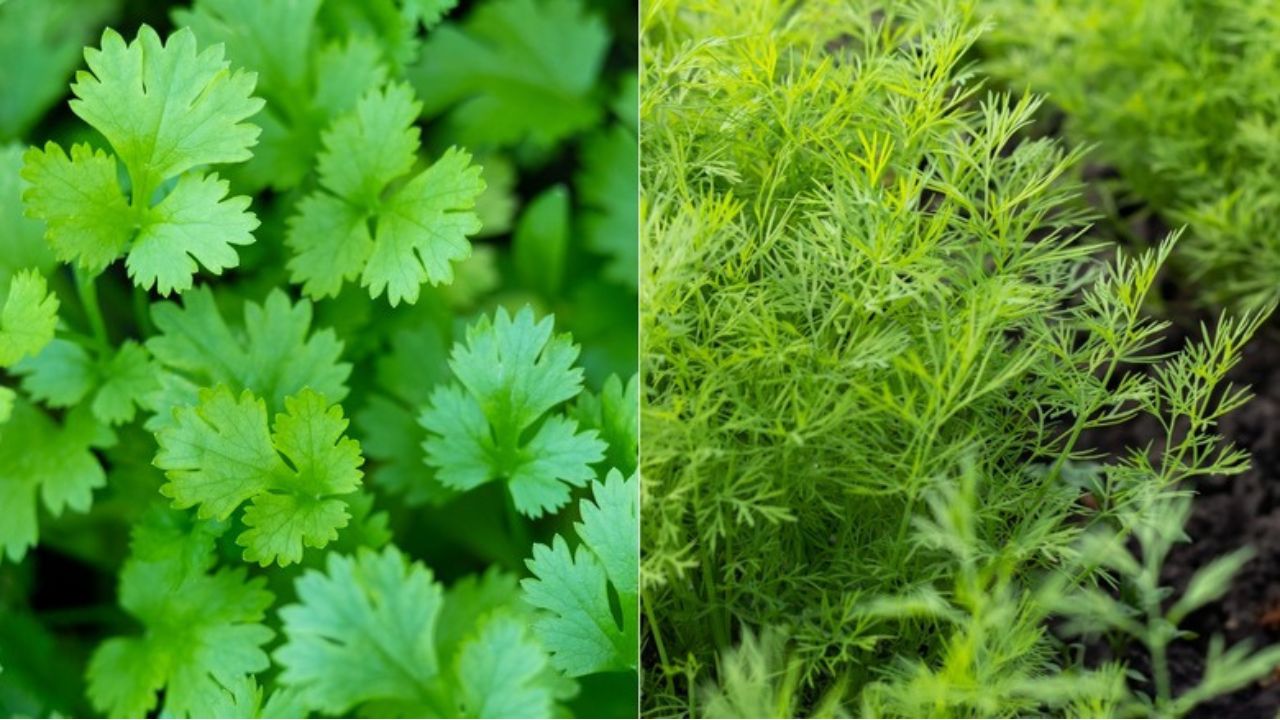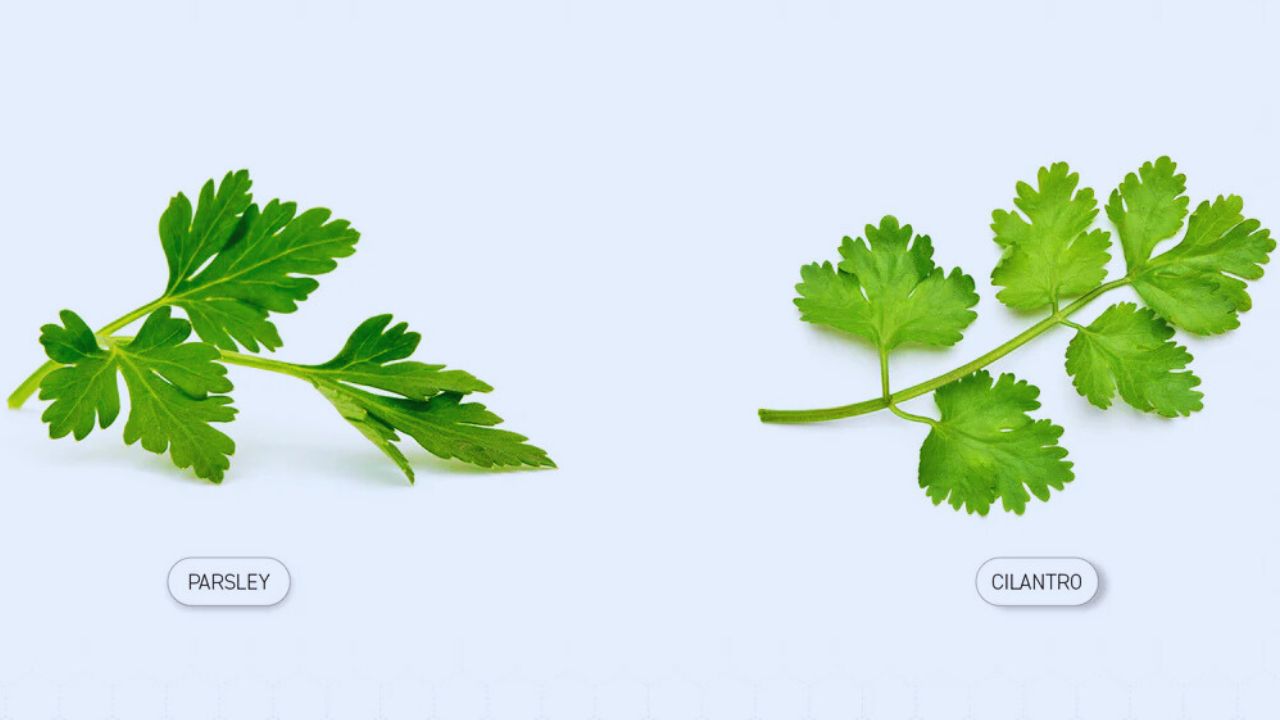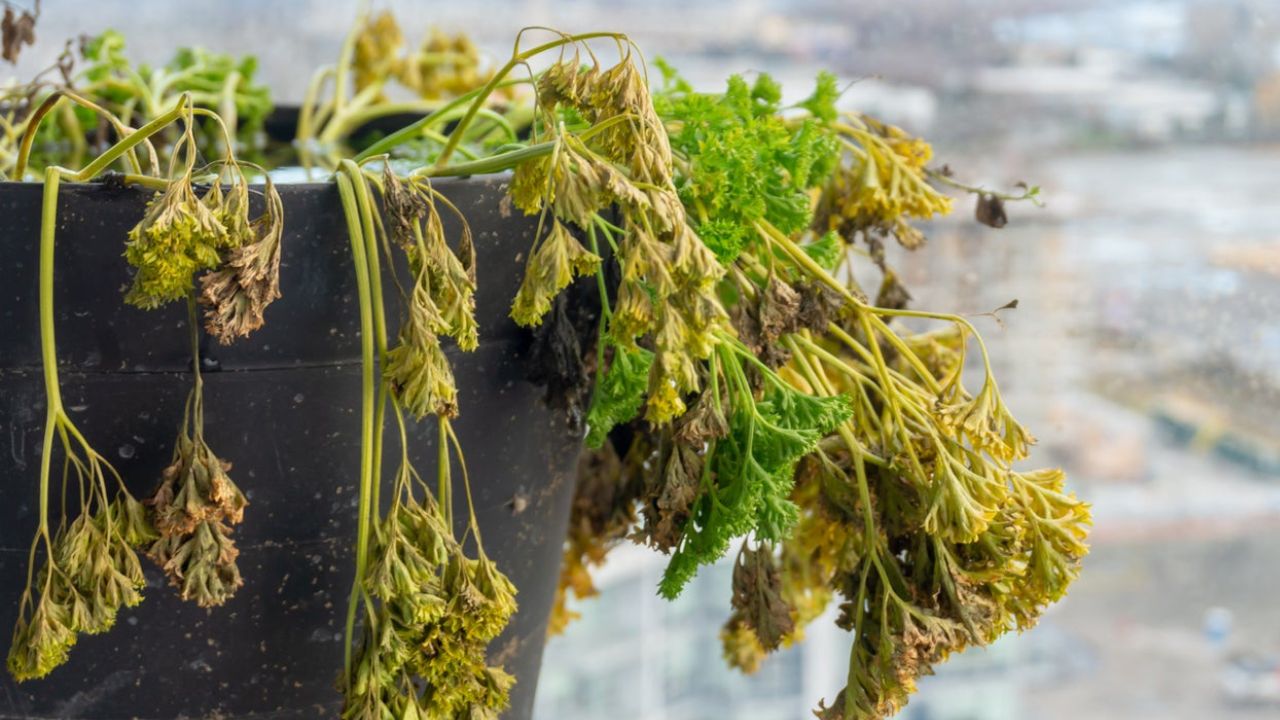Dill and cilantro can grow together as they share similar needs for sunlight, soil, and watering. Dill’s height offers shade to cilantro, helping prevent bolting in warm climates. However, their differing growth cycles require proper spacing and care to avoid competition and ensure healthy growth. This article covers their compatibility and tips for successful planting.
Can Dill and Cilantro Grow Together?
Dill and cilantro can grow together due to their similar needs for well-draining soil, moderate watering, and sunlight. Dill’s taller growth can provide light shade for cilantro, helping to prevent bolting in warm climates.
However, their differing life cycles pose challenges—cilantro bolts quickly, requiring replanting, while dill has a longer lifespan. Additionally, planting them too closely may lead to competition for nutrients and sunlight, so proper spacing is crucial for their mutual growth.
Understanding Dill and Cilantro
Characteristics of Dill
Dill is a fragrant herb with feathery, fern-like leaves. It is commonly used in cooking for its mild, tangy flavor, particularly in pickles, salads, and fish dishes. Dill thrives in well-drained soil, requires full sun, and grows tall, with a height range of 18 to 48 inches. It is a cool-season herb and prefers a slightly acidic soil pH.
Characteristics of Cilantro
Cilantro, also known as coriander in its seed form, is a herb with fresh, bright green leaves and a distinctive citrusy flavor. It’s commonly used in cuisines worldwide, including Mexican, Indian, and Middle Eastern dishes.
Cilantro grows best in moderate temperatures and can tolerate some shade. It prefers well-drained soil and, like dill, benefits from regular watering. However, cilantro tends to bolt quickly in hot conditions, meaning it flowers and produces seeds sooner than expected.
Growing Conditions for Dill and Cilantro
Sunlight Requirements
Dill thrives in full sunlight, requiring 6 to 8 hours of direct exposure daily to ensure optimal growth and robust flavor development. Cilantro, on the other hand, also performs well in full sun but benefits from partial shade in warmer climates to delay bolting and extend its growing season.
Soil Preferences
Both dill and cilantro prefer well-draining, nutrient-rich soil to support healthy root development. Dill grows best in slightly acidic to neutral soil with a pH of 5.5 to 7. Cilantro flourishes in neutral to mildly acidic soil, with an ideal pH range of 6.2 to 6.8. Incorporating organic compost or well-rotted manure into the soil improves fertility and ensures consistent growth.
Watering Needs
Consistent watering is crucial for both herbs, as they require evenly moist soil to thrive. Dill is moderately drought-tolerant but performs best with regular watering when the top inch of soil feels dry. Cilantro needs slightly more frequent watering, especially in warm climates, to maintain its fresh, tender leaves.
Avoid overwatering, as waterlogged soil can lead to root rot in both plants. Mulching around the base of the plants can help retain soil moisture and reduce evaporation.
Tips for Planting Dill and Cilantro Together
Spacing Guidelines
Ensure adequate spacing between dill and cilantro to prevent competition for sunlight, nutrients, and water. Maintain at least 12 to 18 inches between the plants to allow sufficient airflow and healthy growth. Proper spacing also makes it easier to manage their unique growth requirements.
Companion Planting Benefits
Planting dill and cilantro together can benefit your garden. Dill attracts beneficial insects like ladybugs and pollinators, which help control pests and support a thriving garden. Cilantro, known for repelling certain harmful insects like aphids, complements dill’s pest-repelling properties, creating a balanced environment for both plants.
Managing Different Growth Rates
To address their differing growth cycles, consider planting cilantro in successive batches to ensure a continuous harvest, as it bolts quickly. Dill’s taller growth should be monitored to prevent overshadowing cilantro in cooler climates. Harvest dill leaves regularly to keep it from flowering too soon, promoting a harmonious growing environment for both herbs.
How to Care for Dill and Cilantro Together
Maintenance Tips
Caring for dill and cilantro together requires consistent attention to their shared and unique needs. Water both herbs evenly to keep the soil moist but not waterlogged. Regularly remove weeds around the plants to prevent competition for nutrients. Prune dill frequently to encourage leaf production and prevent it from overshadowing cilantro, especially in cooler climates.
For cilantro, consider harvesting leaves in small batches to encourage new growth, and replant cilantro seeds every few weeks to maintain a continuous supply, as it tends to bolt quickly.
Common Pests and How to Deal with Them
Both dill and cilantro are susceptible to pests like aphids, caterpillars, and spider mites. To manage these pests, use organic solutions such as spraying the plants with a mixture of water and neem oil or introducing beneficial insects like ladybugs that naturally control pest populations.
Additionally, ensure proper spacing and airflow to reduce the risk of fungal diseases, such as powdery mildew, which can affect both herbs in humid conditions. Regularly inspect the plants for signs of pests or disease and address issues promptly to maintain a healthy herb garden.
Alternative Pairings for Dill and Cilantro
Best Companion Plants for Dill
- Cucumbers: Dill helps repel cucumber beetles and supports pollination.
- Carrots: Enhances carrot growth while attracting beneficial insects.
- Tomatoes: Dill attracts pollinators and predatory insects that protect tomatoes.
- Onions: Both thrive in similar conditions and benefit each other.
- Lettuce: Dill provides light shade, preventing lettuce from bolting.
Best Companion Plants for Cilantro
- Tomatoes: Cilantro helps deter aphids and other pests harmful to tomatoes.
- Peppers: Acts as a pest deterrent while thriving alongside peppers.
- Spinach: Both prefer similar growing conditions and can grow well together.
- Beets: Cilantro supports beet growth by repelling harmful insects.
- Basil: Combines well with cilantro to enhance pest control and growth.
Related Questions People Often Ask:
Can Dill and Cilantro e Planted Together?
Yes, dill and cilantro can be planted together as they share similar sunlight, soil, and watering needs, but proper spacing is essential to avoid competition.
What Are The Benefits of Planting Dill And Cilantro Together?
Dill attracts beneficial insects like ladybugs, while cilantro helps repel pests such as aphids, making them great companion plants.
What Are The Challenges of Planting Dill and Cilantro Together?
Their differing life cycles can be challenging—cilantro bolts quickly, while dill has a longer growing season. Proper spacing and management are crucial.
Can Dill Overshadow Cilantro When Grown Together?
Yes, dill’s taller growth can overshadow cilantro. Prune dill regularly to manage its height and ensure adequate sunlight for cilantro.
Overall Reflection
In conclusion, dill and cilantro can thrive together when their similar growing conditions are met, such as well-drained soil, consistent watering, and proper sunlight. However, careful management of their different growth cycles and adequate spacing are key to preventing competition for nutrients and light. By following proper planting and care tips, these herbs can complement each other and enhance your garden.




